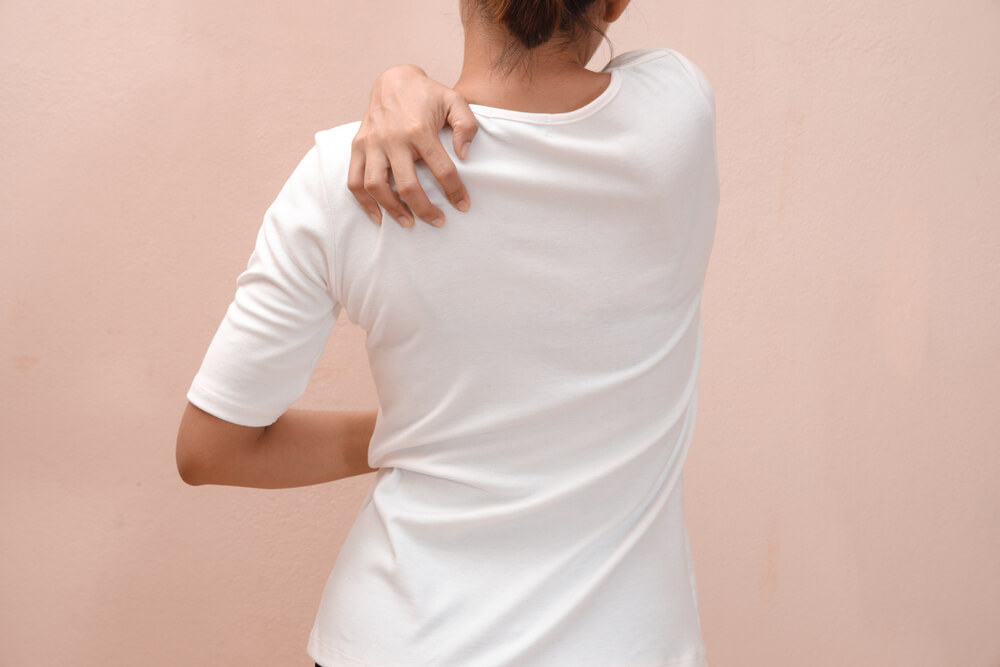If you are transgender or non-binary, you’re likely interested in chest binding. After all, this practice will effectively minimize and flatten your breasts, making you much more comfortable with your look. Chest binding is something that you may do, but you must always consider potential breast binding risks.
Generally, using a breast binder is pretty safe, but it is essential to do it properly. That said, the following content will help you better understand binder safety and chest binding overall.
What Is Chest Binding?
Perhaps you’re just now discovering the truth about who you really are, or have never heard of chest binding before.
Essentially, chest binding is typically done using professional, commercial binders for women, although some people also use other methods, including wearing multiple bras at once or using kinesiology tape. A breast binder will flatten the breast tissue, thus minimizing your breasts’ outward appearance. Chest binding is typically done by transgender men and non-binary or genderfluid people.

How to Wear a Breast Binder?
When it comes to binder safety and reducing potential breast binding risks, all you have to do is follow some general guidelines.
Pick Air-Permissible Binders for Women
One of the reasons why commercial binders might be the best choice is the fact that they are made of lightweight materials, allowing your skin to breathe. Keep in mind that materials such as plastic wraps or kinesiology tapes aren’t breathable, and they may be too harsh for your skin. In the worst case, this may even cause a bacterial or fungal infection to develop.
Commercial binders for women are available in a variety of sizes and colors, so choosing the right one for you shouldn’t be too difficult. You can wear them like any other piece of clothing, and many women do actually find them to be a decent alternative to bras.
Take Some Days Off
While wearing a chest binder is no doubt useful, a good binder safety guide does not recommend you wear it on a daily basis. Take some days off and let your skin and tissue rest and recover. You’ll have a much greater chance of avoiding potentially adverse breast binding risks as well. Basically, it would be ideal for picking one to two days a week when you won’t be wearing it.
Try Not to Sleep in Your Binder
Chest binders are great, but you should always take your binder off before going to bed. This is extremely important, especially if you suffer from any kind of breathing problem, including sleep apnea. Chest binders can be pretty tight, which in turn may worsen your symptoms. Not to mention, sleeping in your binder can be really uncomfortable.
Stay Hydrated
Using a chest binder, especially one that’s very tight, can lead to overheating. This is why you should remember to always carry a small bottle of water while binding. Try to avoid participating in any physically draining activities.
Watch Out for the Side Effects
Although breast binders are extremely helpful, there are some risks associated with using them as well. Be on the lookout for any possible side effects. A chest binder can negatively affect your body in a lot of different ways, so don’t ignore any worrying changes or signs your body is sending you.
Pay special attention to swelling, bleeding, or skin irritation. If any of such side effects occur, it might be best to consider visiting a doctor, taking some days off, or simply switching to another binder. You can always schedule your appointment at Breast Care Center Miami if you have any questions or concerns about using a breast binder.
Does Chest Binding Carry Any Risks?
Although there’s still too little data available, specialists have, in fact, noticed that chest binding could lead to a variety of problems. In some cases, it has been attributed to causing shortness of breath and respiratory issues. This is, in fact, quite common for people with very large breasts, as well as those who are overweight. It’s recommended that people with asthma, or any other kind of breathing problem, opt-out of chest binding during an acute illness.
Furthermore, using a chest binder can become quite uncomfortable and, in some cases, may even cause you to experience pain in your chest, abdomen, as well as your shoulders.
By far, the most common breast binding risks are skin and tissue-related. These may include:
- Bacterial and fungal infections
- Swelling
- Itching
- Scarring
- Tenderness
Next, some neurological issues can be attributed to wearing a chest binder as well. These include dizziness, lightheadedness, and even headaches. Furthermore, using a very tight chest binder can lead to quite severe consequences. Some of the most severe side effects of using a chest binder include:
- Rib fractures
- Loss of muscle mass
- Changes in your posture
Now, it is essential to note that just because some side effects have been attributed to using a chest binder, it doesn’t mean that you’ll experience them too. There are many people who wear breast binders with no problems at all. The chance of them appearing, though, is something you should take into account. Also, keep in mind that wearing a chest binder on a hot summer day may lead to overheating, as well as cause some fatigue.

How Many People Experience Side Effects?
Quite a lot, actually. A study made in 2018 revealed that about 88.9% of chest binder users experienced at least one negative symptom. That basically means that out of every ten people who use a chest binder, nine will experience some level of discomfort. Although it may come to you as a bit of a surprise, commercial binders were, in fact, associated with a far greater range of adverse effects than using a plastic wrap or some kinesiology tape. It needs to be said that, as of now, there is simply too little data to decide whether wearing a commercial binder will be a better or worse choice than using other methods.
How the Doctors Can Help
Whether this is your first time educating yourself on the chest binders, or you’re just looking to purchase a new model, it’s always a good idea to consult your doctor first. They will be able to help you make more informed decisions and choose the binder that is actually appropriate for you. Make sure to tell them about any health problems you’re experiencing, including heart or lung problems.
Your doctor will also be able to help you overcome the side effects of using a chest binder. Do not hesitate to visit their office whenever you notice some worrying symptoms.
Chest binding is a very effective method of reducing the appearance of your breast tissue. Keep in mind, however, that it comes with specific side effects. Still, if you follow the guidelines correctly, the risk of such side effects will decrease considerably. Feel free to reach out to us at Breast Care Center Miami if you need help deciding whether breast binders are the right choice for you and professional assistance on how to use them safely.



